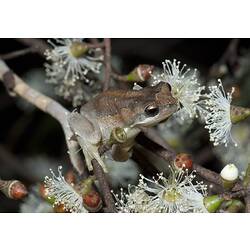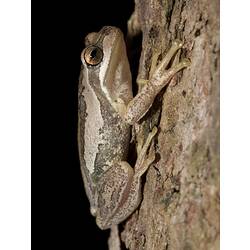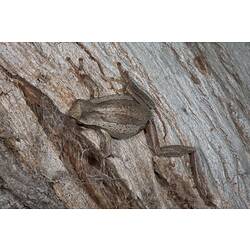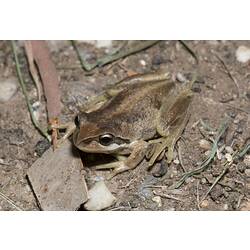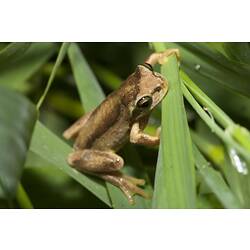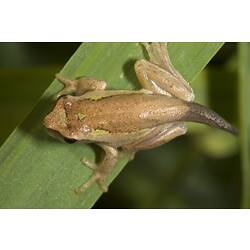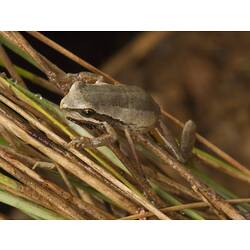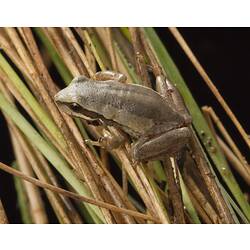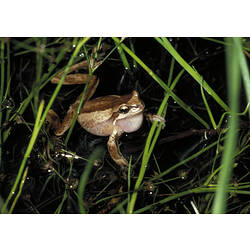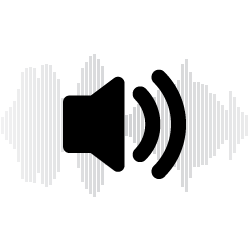General Description
Body varies from beige to brown, some individuals have a reddish, yellow or green wash. Back with broad dark band along the middle from between the eyes to the base of the body. Thighs orange and eyes are golden. Belly white or cream. Fingers are unwebbed, toes partly webbed. Pads present but only slightly wider than fingers and toes. Body size up to 4.5 cm. Call a fast, high pitched "creeee creee creeee creeee".
Biology
Southern Brown Tree Frogs are excellent climbers and are very agile. They are often found in large numbers around water bodies. Frogs call year round, often after rain, from the ground, in low vegetation or floating in the water.
Distribution
Occurs along the south-east coast, from southern New South Wales, through Victoria to the south-east region of South Australia. Also found in Tasmania.
Habitat
On the ground or damp vegetation near the ground, in urban areas and around streams, lakes and ponds.
More Information
-
Animal Type
-
Animal SubType
-
Brief Id
Medium-sized brown tree frog with patches of orange on rear legs.
-
Colours
Brown, White, Yellow, Black, Orange, Green
-
Maximum Size
4.5 cm
-
Habitats
Wetland, Urban, DryForest, WetForest, Woodland, Mallee, Grassland
-
Diet
Insects
-
Endemicity
-
Commercial
No
-
Conservation Statuses
CITES: Not listed, FFG Threatened List: Not listed, EPBC Act 1999: Not listed, IUCN Red List: Least Concern
-
Taxon Name
-
Scientific Author
(Duméril & Bibron, 1841)
-
Common Name
Brown Tree Frog
-
Other Names
Ewing's Tree Frog
-
Kingdom
-
Phylum
-
Subphylum
-
Class
-
Subclass
-
Order
-
Family
-
Genus
-
Species Name
ewingii

